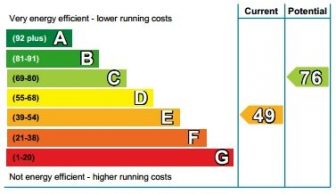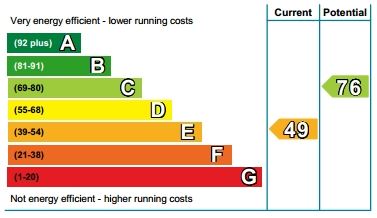 At the current pace of energy efficiency improvements, it will take landlords another 18 years to bring all privately rented homes in England and Wales to an Energy Performance Certificate (EPC) rating of A to C, according to data from Hamptons.
At the current pace of energy efficiency improvements, it will take landlords another 18 years to bring all privately rented homes in England and Wales to an Energy Performance Certificate (EPC) rating of A to C, according to data from Hamptons.
While this timeline goes well beyond the government’s 2030 target, it represents a huge improvement over the 89-year forecast based on 2016 rates.
The acceleration in upgrades is partly due to landlords making improvements to meet the Conservatives’ now-abandoned energy efficiency plans. Despite this, the current pace of progress is insufficient to meet expected 2030 regulations, which would require around 340,000 rental properties to be upgraded each year.
In 2024, only about 115,000 homes are expected to meet the necessary EPC standards, meaning the modernisation rate will need to triple to meet the target.
So far this year, 39% of EPC assessments of rental properties have resulted in an upgrade, but this rate of improvement is below the levels seen before the 2018 requirement for properties to achieve at least an EPC rating of E.
Over half (55%) of rental properties awarded new EPC certificates this year achieved a C rating or better, compared with 48% of owner-occupied properties.
Most homes whose EPC rating improved this year went from D to C, with 50% of homes previously rated D achieving C or higher when re-rated. However, only 9% of homes previously rated C achieved a B or higher rating, highlighting the difficulty of making significant improvements.
Despite the progress, a small percentage of rental properties are unlikely to meet the AC rating threshold. Between 3 and 4% of rental properties are expected to fail to meet this standard, compared to 7 to 8% before a change in EPC methodology in mid-2022. The new methodology benefits electrically heated homes, often moving them into higher EPC bands.
Older, cheaper properties in the north of England are particularly difficult to modernise and these homes tend to achieve higher rental yields. In 2024, EPC-rated D homes achieved an average gross yield of 7.6%, compared to 5.5% for newly built EPC-rated A homes. EPC-rated E properties achieved the highest returns at 7.9%, but their value and construction often make it unviable or impossible to achieve an EPC-rated C.
Aneisha Beveridge, head of research at Hamptons, said: “Successive changes to proposed energy efficiency regulations have changed the playing field for landlords, some of whom are facing costs that could run into the tens of thousands of pounds.”
“Despite this, many investors have continued to improve the energy efficiency of their rental properties and we are currently on track for 100% of rental properties where EPC air conditioning is viable to achieve this rating within a generation.
“In order to achieve the government’s target for 2030, the same number of households will have to be renovated to improve energy efficiency in the next five years as in the last 30 years.
“While the requirement that all rental properties must have an EPC AC rating by 2030 is achievable, landlords will need sufficient time and resources to achieve this. It is important that landlords receive full clarity on this target this year.”

